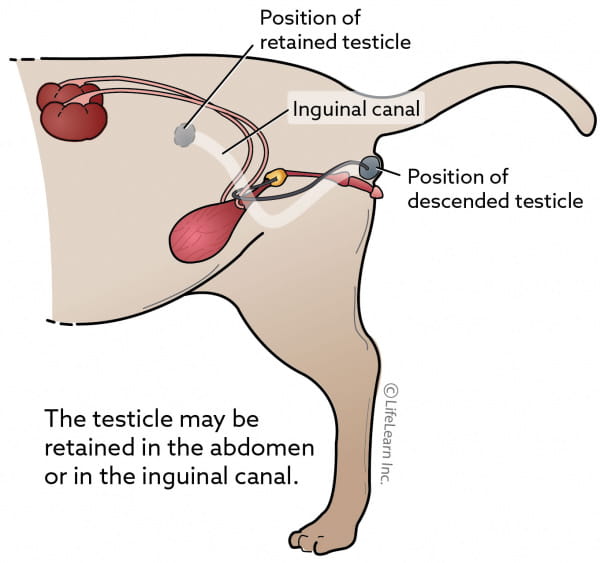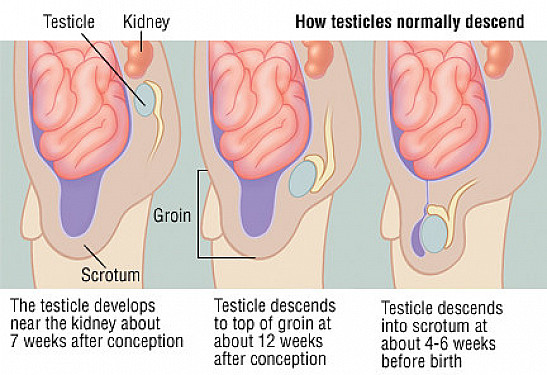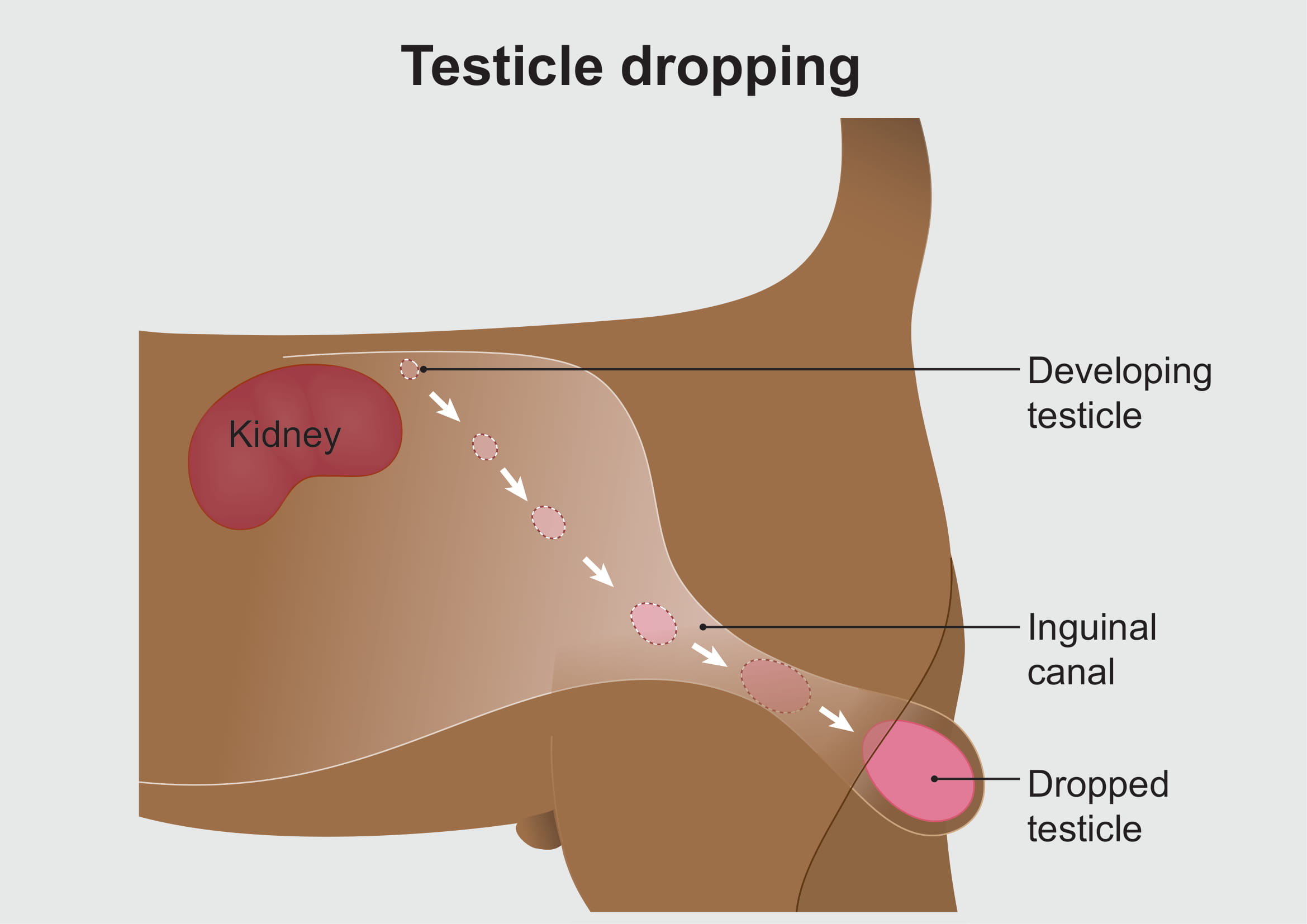Which Surgical Procedure Is Used to Treat Cryptorchidism
Orchiopexy orchiectomy testicular torsion castration. If your son has an undescended testicle his doctor might recommend surgery for diagnosis and potential treatment.

Cryptorchidism And Hypospadias Endotext Ncbi Bookshelf
Laparoscopy is done to locate an intra-abdominal testicle.

. Cryptorchidism or the failure of testicular descent into the scrotum is a surgical condition found in 6 of newborns but drops to 15-35 of males at 3 months. By the time a kitten reaches six months old both testicles should have descended into the scrotum. Surgery is recommended after 6 months of age.
Surgical treatment is mainly used to prevent secondary testicular degeneration by high temperature of the abdomen 3. This surgery involves finding the testis in the abdomen or higher in the scrotum then bringing it down into the scrotum. Hormonal therapy should be considered for patients in whom the diagnosis of retractile testis is not certain.
Up to 10 cash back In the last 12 years 916 cryptorchid testes have been treated sequentially with therapeutic and surgical procedures. However orchiopexy especially for bilateral cryptorchidism does not always guarantee subsequent fertility and paternity. The retained testicle should be removed to prevent testicular torsion or cancer and the normal testicle should be removed to prevent cryptorchid offspring.
Orchiopexy is one of the most frequently used surgical procedures for cryptorchidism and has been shown to have a beneficial effect on fertility. For patients who are not candidates for surgical interventions hormonal therapy might be appropriate. Although the age of the boys varied considerably at the time that corrective procedures commenced the best results were obtained when they were in the first year of life.
The doctor might be able to fix the undescended testicle during the same procedure. A small tube containing a camera is inserted through a small incision in your sons abdomen. It aids in the diagnosis and treatment of this condition.
Cryptorchidism can broadly be defined in 3 groups. Treatment is not usually recommended because surgery is much more effective. 16 17 Hormonal therapy has been employed in Europe for many years as a primary therapy for cryptorchidism.
The most common treatment is an operation called an orchidopexy. In case none of the treatments mentioned so far are viable options saline testicle prosthetics can also be used. Since cryptorchidism can cause infertility and early orchiopexy can improve fertility we tried to determine whether medical and surgical treatment in the 1st year of life can improve testicular fertility.
TURP is removal of prostate tissue through the urethra. If the cat is a unilateral cryptorchid both testicles should be surgically removed. The primary care provider or surgeon should evaluate the child at 2-3 weeks and 6-12 months following surgery to determine testis location size and viability.
Abdominal cryptorchid orchiectomy in dogs is a surgical procedure used to correct canine cryptorchidism a condition in which one or both of a male dogs testicles fail to descend into the scrotum. Drugs or hormone treatment arent useful. Ultrasound-guided TURP Green-light PVP TURP vaporization.
Controversy remains concerning the optimal treatment approach for cryptorchidism. Left untreated a cryptorchid dog can develop testicular cancer within the undescended testicle that can quickly spread to other organs of the body. Which minimally invasive procedure may be used instead of TURP for the treatment of BPH.
Laparoscopy is a procedure where the doctor inserts a tiny tube with a camera into the patients abdomen. Cryptorchism is defined as the failure of one or both testicles to descend into the scrotum. Orchidopexy is a surgical procedure used to fix the testes into the scrotum to treat conditions such as cryptorchidism.
There are two commonly used types of surgery. 1Department of Paediatric Surgery Regina Margherita Childrens Hospital Piazza Polonia 94 10126 Torino Italy. A vasectomy is a removal of a segment or all of the vas deferens to prevent sperm from leaving the male body.
In the first one the testicle is drawn into the scrotum through the inguinal canal and laparoscopic procedure is done in case that the testicle is placed higher in the belly. Pseudo-cryptorchidism may resolve spontaneously or require surgical intervention. In case surgery is not an option cryptorchidism can also be treated with the help of hormone therapy as it may stimulate the testicle to drop into the sac.
This surgery helps identify a testicle located in the groin. This surgery is nearly 100 successful. The main treatment for cryptorchidism is surgery to move the testicle into the scrotum orchidopexy.
Where testis is absent from the scrotum but lies along the line of testicular descent. If a testicle has not fully descended by the age of 6 months surgery should be performed within the. Two reviewers independently assessed studies against predetermined criteria.
The insertion of a tube occurs through a small incision. If a testicle has not fully descended by the age of 6 months surgery. The cryptorchid testicle can be located anywhere along the path from the area of fetal development of the gonads just caudal to the caudal pole of the kidney to the subcutaneous tissue between the external inguinal ring and the scrotum.
This surgery is called an orchiopexy. The surgical procedure includes open surgery and Laparoscopic Orchipexy or Orchidopexy. Compared with a control group paternity was significantly compromised in men with previous bilateral but not.
The objective of this study was to assess effectiveness of hormone therapy or surgery for cryptorchidism. This surgery is nearly 100 successful. We searched Medline and other databases from 1980 to February 2012.
Abdominal cryptorchid orchiectomy is a surgical procedure used to treat cryptorchidism a condition in which one or both of the testicles do not descend properly. A circumcision is done to remove the prepuce. In recent years laparoscopic surgery and transscrotal incision surgery have been widely used to treat cryptorchidism and satisfactory clinical results have been achieved 1719.
Abdominal cryptorchid orchiectomy is used when the testicle s has become retained in the abdomen. The testes of the boys at this age who had been treated. Surgical fixation of the testes to correct cryptorchidism is.
The timing takes into account when the child is able to handle anesthesia and the surgery. Surgical removal is the only treatment for cryptorchidism. The child is put under general anesthesia for this surgery.
A surgical procedure to correct an accumulation of fluid in the. The hCG Human chorionic gonadotropin and GnRH gonadotropin releasing hormone therapy are used in cryptorchidism due to deficiency in the HPA axis. Treatment of cryptorchidism should not end with the first postoperative visit.
Laparoscopic testicular descent fixation without inguinal incision and inguinal canal incision involves less trauma less pain and a good cosmetic effect. Often cryptorchid cats will have 2 incisions. Surgery Orchidopexy The main treatment for cryptorchidism is surgery to move the testicle into the scrotum orchidopexy.

Cryptorchidism Undescended Testes Nursing Care Management

Retained Testicle Cryptorchidism In Cats Vca Animal Hospitals
Cryptorchidism Causes Symptoms Treatment Fort Collins Co

Diagnosis And Management Of Cryptorchidism European Urology Supplements

Management Of Cryptorchidism Download Table

Undescended Testicle Cryptorchidism Harvard Health

Treatment Options For Children With Undescended Testicles Comparative Effectiveness Review Summary Guides For Consumers Ncbi Bookshelf

:max_bytes(150000):strip_icc()/orchiopexy-overview-4582225-5c70166bcff47e0001b1e2e2.png)
No comments for "Which Surgical Procedure Is Used to Treat Cryptorchidism"
Post a Comment